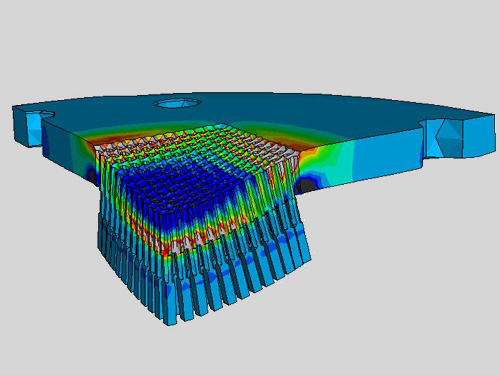Due to their mechanical, thermal and tribological properties, ceramic materials are superior to metallic materials or polymers in many applications. However, it is necessary to keep the component loads in use within defined limits. That is why load limits are determined for temperatures up to 1600° C or in corrosive media. The experimental results are used in numerical simulations to evaluate stress situations, to optimize component geometry, or to demonstrate reliable functionality.
Ceramic materials and components
GRACE: Graphene-ceramic nanocomposites for tribological application in aqueous environments
The main objective of GRACE is to develop novel, highly efficient tribological systems on the basis of as-synthesized / templated graphene and functionalised graphenes and their ceramic nanocomposites to prove their superior quality and suitability for technical applications e.g. for slide bearings and face seals in aqueous media.
Publications
- Kurz, J.; Amann, T.; Kailer, A., Tribological investigations of silicon nitride lubricated by ionic liquid aqueous solutions, Tribology Transactions 62/2 (2019) 295-303 Link
- Förg, A.; Konrath, G.; Popa, S.; Kailer, A.; Killinger, A.; Gadow, R., Tribological properties of high velocity suspension flame sprayed (HVSFS) ceramic coatings, Surface and Coatings Technology 349 (2018) 901-908 Link
- Zhang, W. ; Schröder, C.; Schlüter, B.; Knoch, M. ; Dusza, J.; Sedlak, R.; Mülhaupt, R.; Kailer, A., Effect of mechanochemically functionalized multilayer graphene on the tribological properties of silicon carbide/graphene nanocomposites in aqueous environment, Tribology Letters 66/4 (2018) Art. 121, 12 Seiten Link
 Fraunhofer Institute for Mechanics of Materials IWM
Fraunhofer Institute for Mechanics of Materials IWM